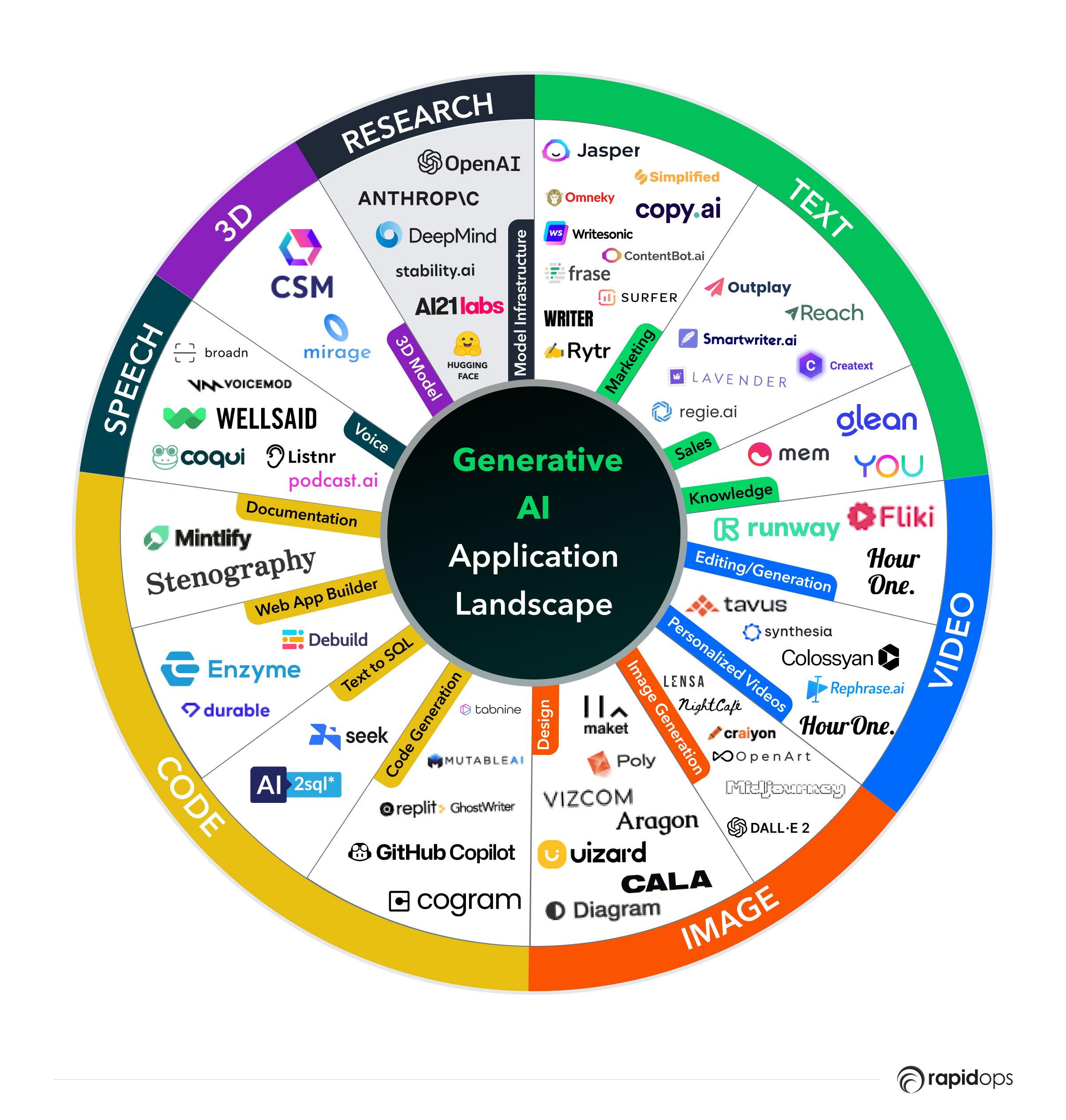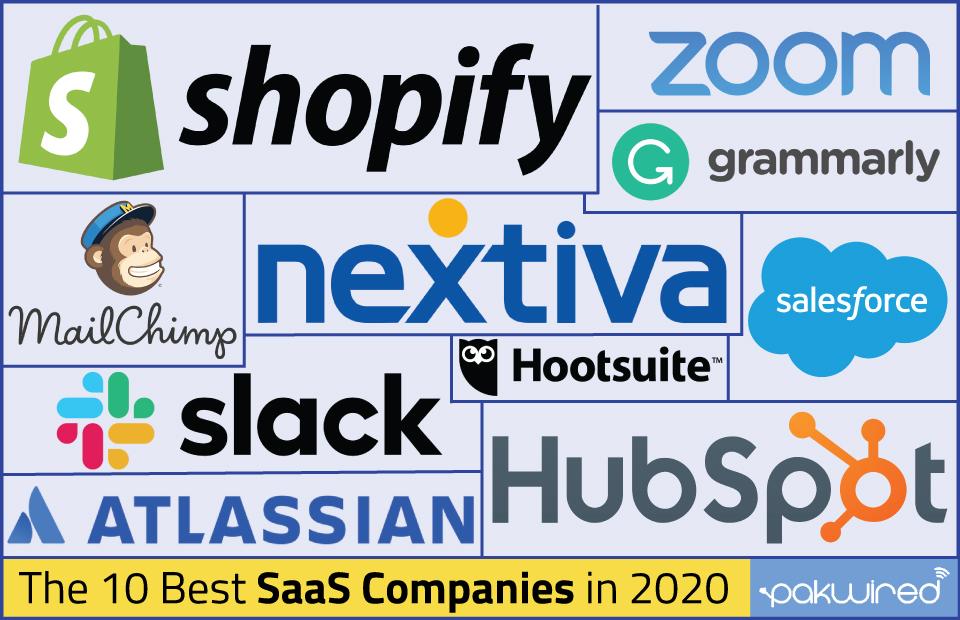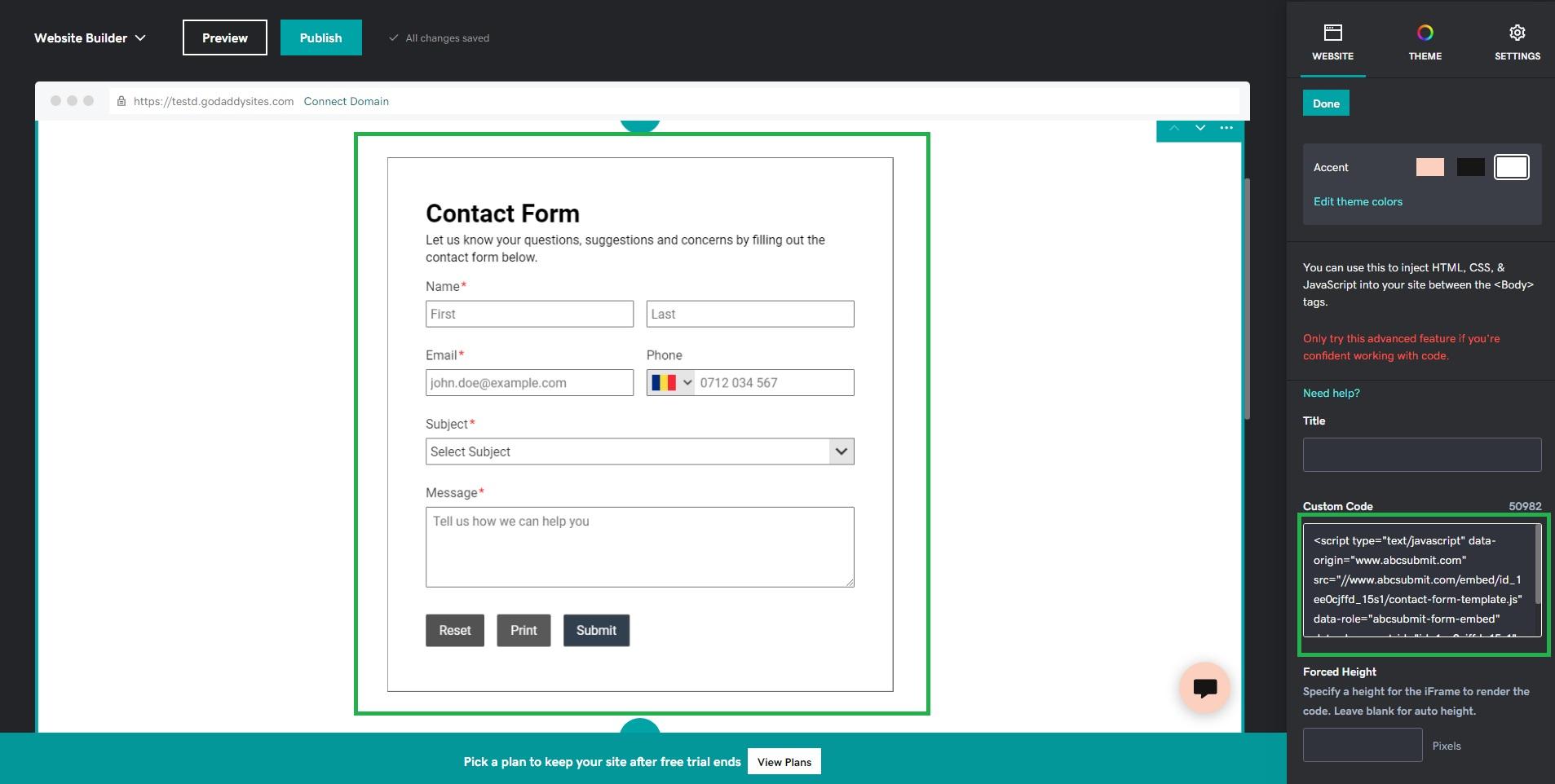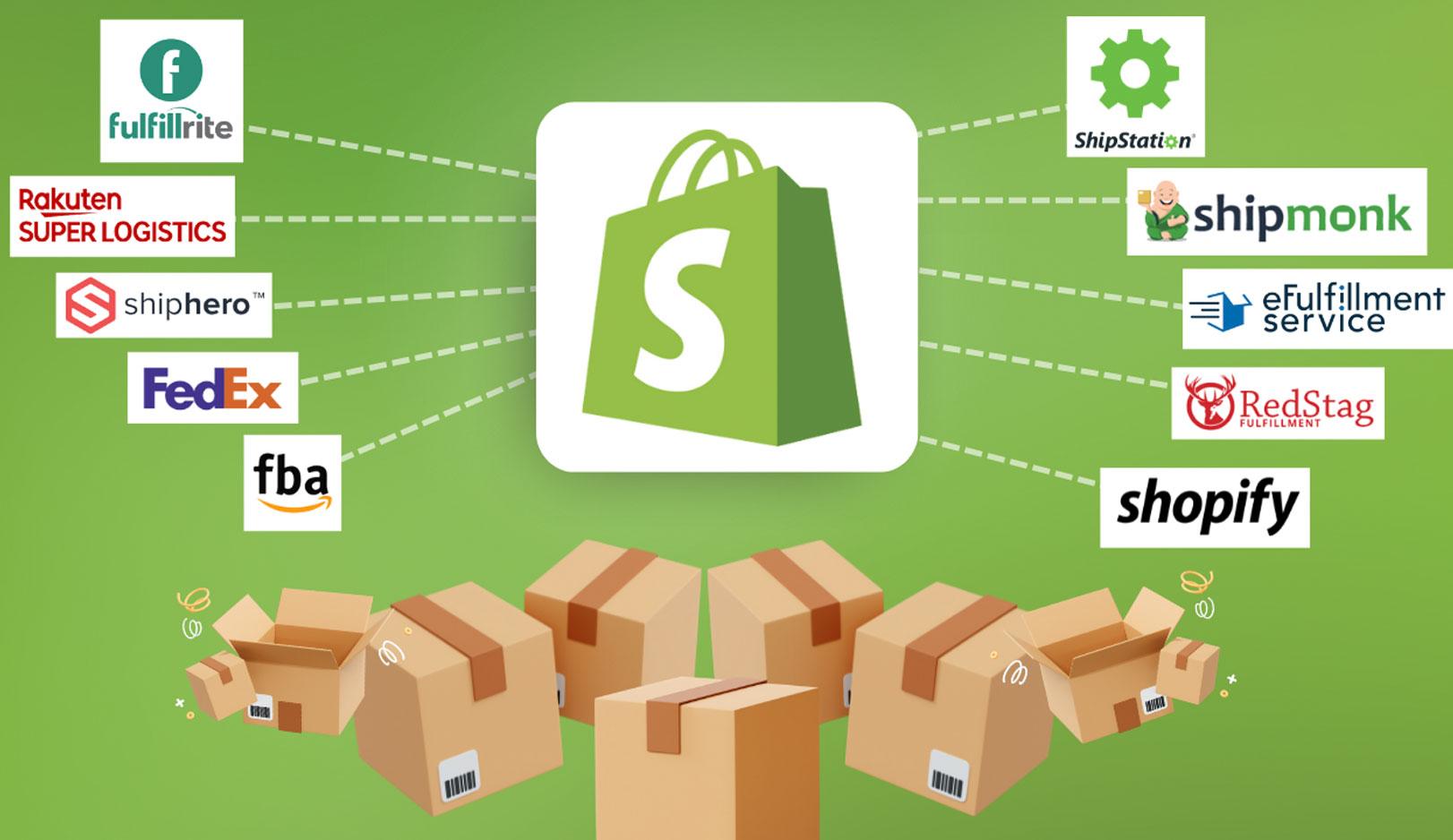
Are you looking to tap into the world of online income but don’t know where to start? Well, you’re in for a treat! Today, we’re diving into Shopify affiliate marketing—a fantastic way for beginners to earn money without the hassle of managing your own inventory or dealing with customer service. Imagine promoting products you love and getting paid for every sale made through your unique referral link. Sounds enticing, right? With Shopify’s robust platform and an ever-growing list of affiliate programs, now is the perfect time to jump in and discover how to turn your passion for online shopping into a profitable venture. So, grab your favorite beverage, get comfy, and let’s unlock the secrets of Shopify affiliate marketing together!
Understanding the Basics of Shopify Affiliate Marketing
Shopify affiliate marketing is a lucrative avenue that allows individuals to earn money by promoting Shopify stores. When you become an affiliate, you essentially act as a bridge between potential customers and Shopify merchants. By sharing unique affiliate links, you can earn commissions on every sale made through your referral.
To get started, it’s essential to understand the key components involved:
- Affiliate Program: Shopify offers an affiliate program that allows affiliates to earn a commission for each new merchant referred to the platform. Ensure you’re familiar with the terms and conditions of the program.
- Unique Referral Links: As an affiliate, you will receive unique links to share. These links track the traffic you send to Shopify, ensuring you get credit for your referrals.
- Commissions: Affiliates typically earn a percentage of the sale. Understanding the commission structure is crucial for strategizing your promotional efforts.
- Marketing Strategies: Successful affiliates often utilize a variety of marketing strategies, including content marketing, social media promotion, and email marketing. Finding the right mix is key to your success.
One of the first steps to thriving in Shopify affiliate marketing is identifying your niche. Focusing on a specific area allows you to target a more engaged audience, making your promotional efforts more effective. For instance, if you have experience in fashion, you can promote clothing and accessories stores on Shopify. Tailoring your content to resonate with your audience will significantly enhance your chances of conversion.
Next, consider creating valuable content that attracts your audience. This can include:
- Blog Posts: Write informative articles about the benefits of using Shopify for e-commerce.
- Video Tutorials: Showcase how to set up a Shopify store or highlight successful Shopify businesses.
- Social Media Content: Share tips and tricks related to e-commerce and Shopify on platforms like Instagram, Facebook, and Twitter.
Using SEO techniques is also vital to ensure your content reaches a broader audience. Optimize your blog posts and videos with relevant keywords while maintaining a natural flow. This will not only help you rank higher on search engines but also attract organic traffic to your affiliate links.
tracking your performance is essential. Utilize analytics tools to monitor your clicks, conversions, and overall earnings. Adjust your strategies based on the data you gather to optimize your results continually. Remember, the key to success in affiliate marketing is to stay persistent and adaptable to the ever-changing market trends.
| Action Item | Purpose |
|---|---|
| Sign up for the Shopify Affiliate Program | Gain access to marketing materials and unique links. |
| Create a niche-focused blog | Attract a targeted audience interested in your niche. |
| Utilize social media platforms | Increase your reach and engagement with potential buyers. |
| Implement SEO strategies | Improve visibility in search engine results. |
| Track performance | Refine strategies based on what works best. |

Why Choose Shopify for Affiliate Marketing
When it comes to affiliate marketing, selecting the right platform can make all the difference in your success. Shopify stands out as a premier choice for several compelling reasons that cater specifically to the needs of affiliate marketers. Its user-friendly interface and robust features empower you to maximize your earnings while keeping the process enjoyable and manageable.
Seamless Integration: Shopify offers a plethora of built-in tools and third-party integrations that streamline the affiliate marketing process. By connecting with various affiliate networks and marketing tools, you can easily track your referrals, commissions, and performance metrics all in one place. This integration saves time and enhances your ability to focus on what really matters: driving traffic and converting sales.
Customizable Storefronts: The design aspect of your affiliate marketing strategy is crucial. Shopify provides a wide array of themes and customization options that allow you to create a visually appealing storefront tailored to your niche. A well-designed store not only attracts visitors but also encourages them to explore products and make purchases, which is essential for boosting your affiliate commissions.
Reliable Payment Processing: Shopify’s secure payment processing ensures that you and your affiliates are paid on time and without hassle. With multiple payment gateways available, you can choose the ones that best suit your audience and business model. This reliability fosters trust among your affiliates, encouraging them to promote your products more enthusiastically.
Comprehensive Analytics: Understanding your audience and their purchasing behavior is key to successful affiliate marketing. Shopify’s analytics dashboard provides valuable insights into your store’s performance, allowing you to track metrics like traffic sources, conversion rates, and customer demographics. By analyzing this data, you can refine your marketing strategies and focus on the tactics that yield the highest returns.
Strong Community Support: Shopify boasts a vibrant community of users and developers, which can be incredibly beneficial for newbies in the affiliate marketing space. From forums and online groups to extensive documentation, you can find answers to your questions, share experiences, and learn best practices. This support network can be invaluable as you navigate the complexities of affiliate marketing.
Mobile Optimization: With mobile shopping on the rise, having a mobile-optimized platform is crucial. Shopify automatically adjusts your storefront for mobile devices, ensuring that your audience has an excellent shopping experience regardless of the device they use. This responsiveness not only helps in retaining customers but also boosts your SEO, making your affiliate links more visible to potential buyers.
| Benefits of Using Shopify | Details |
|---|---|
| Ease of Use | User-friendly interface, perfect for beginners. |
| Design Flexibility | Wide range of customizable themes and templates. |
| Security | Robust security features for safe transactions. |
| Support | Access to a large community and support resources. |

Setting Up Your Shopify Affiliate Account Made Easy
Setting up your Shopify affiliate account is a straightforward process that can open the door to a world of earning potential. By taking these simple steps, you’ll be well on your way to promoting Shopify products and earning commissions.
1. Create Your Shopify Account
Before you can start your affiliate journey, you need to have a Shopify account. Sign up for a free trial on the Shopify website. This will give you access to the platform and its affiliate program. Once you’ve set up your account, you can begin familiarizing yourself with Shopify’s features.
2. Join the Shopify Affiliate Program
To become an affiliate, you need to apply for the Shopify Affiliate Program. Head over to the Shopify affiliate page and fill out the application form. Here, you’ll provide details about your marketing experience, how you plan to promote Shopify, and your website or blog information. Make sure to highlight your passion for commerce and your understanding of the platform.
3. Get Your Unique Affiliate Link
Once you’re approved, you’ll receive access to your unique affiliate link. This link tracks any sales made through your referrals. Place this link prominently on your website, blog, or social media accounts. Here’s how to effectively use your link:
- Include it in blog posts that review Shopify.
- Share it on social media with engaging content.
- Integrate it into email newsletters.
4. Create Valuable Content
Content is king when it comes to affiliate marketing. Focus on creating valuable, informative content that resonates with your audience. This could be tutorials, product reviews, or comparisons. The goal is to establish yourself as a trustworthy source so potential customers feel confident clicking your affiliate link.
5. Utilize Marketing Tools
Shopify provides a variety of marketing resources and tools to help you succeed. Use banners, ads, and promotional materials available in the affiliate dashboard. They also offer insights and tips that can enhance your marketing strategy.
6. Monitor Your Performance
Keep an eye on your affiliate dashboard to track clicks, conversions, and earnings. Understanding what works best will allow you to refine your content and marketing strategies over time. Analyze which channels drive the most traffic and focus your efforts there.
Identifying Profitable Niches in Shopify
Finding a lucrative niche is essential for success in the Shopify affiliate marketing landscape. With countless options available, it’s crucial to narrow down your focus to areas that not only interest you but also have a proven track record of profitability. Here are some strategies to help you uncover those hidden gems.
Research Trending Markets: Start by exploring trending markets. Use tools like Google Trends or social media platforms to identify what products are gaining traction. Pay attention to seasonal trends as well; certain products may see surges in popularity at specific times of the year. By tapping into these trends, you can position yourself ahead of the competition.
Analyze Competition: Once you’ve identified potential niches, it’s vital to assess the competition. A healthy level of competition often indicates a profitable niche, but be mindful of oversaturated markets. Consider the following factors:
| Factor | Analysis |
|---|---|
| Market Saturation | Look for niches with manageable competition. Check the number of Shopify stores in that niche. |
| Top Sellers | Research the leading brands and products in your chosen niche to understand their success. |
| Customer Feedback | Read reviews to gauge customer satisfaction and identify gaps in the market. |
Evaluate Profit Margins: Not all niches are created equal when it comes to profit potential. Focus on products that offer higher profit margins. Consider dropshipping products that are not only affordable but also have the potential for significant markup. Some common high-margin categories include:
- Health and Wellness: Supplements and fitness gear
- Home Décor: Unique or handmade items
- Beauty Products: Skincare and cosmetics
Consider Affiliate Programs: When selecting your niche, it’s crucial to find affiliate programs that align with your interests. Shopify offers various affiliate opportunities that can enhance your earnings. Look for programs that provide:
- Attractive Commissions: Higher payouts for sales generated through your referrals
- Marketing Resources: Access to banners, email templates, and promotional materials
- Reliable Tracking: Robust systems to track your performance and earnings
Test and Iterate: Once you’ve selected a niche, it’s not the end of the journey. Continuously test different products and marketing strategies. Track your performance metrics closely, such as conversion rates and customer acquisition costs, to identify what’s working and what needs adjustment. This iterative process will help you fine-tune your approach and maximize your profitability over time.
Crafting Compelling Content that Converts
Creating content that truly resonates with your audience is essential for driving conversions in Shopify affiliate marketing. To achieve this, you must focus on crafting messages that speak directly to your target market’s needs and desires. Here are some strategies to effectively engage with your readers:
- Know Your Audience: Take the time to research and understand the demographics, interests, and pain points of your potential customers. Tailor your content to address these specific aspects.
- Use Storytelling: People connect with stories. Share personal experiences or customer testimonials that demonstrate how the products can solve real problems.
- Incorporate SEO Best Practices: Optimize your content with relevant keywords, meta descriptions, and alt text to improve visibility on search engines.
- Include Clear Calls to Action (CTAs): Encourage your readers to take action—whether it’s clicking a link, signing up for a newsletter, or making a purchase. Make your CTAs stand out visually and contextually.
Visual elements play a vital role in capturing attention and enhancing the reading experience. Use high-quality images, infographics, and videos to break up text and illustrate your points.
Here’s a quick overview of the types of content that can effectively drive conversions:
| Content Type | Description | Conversion Potential |
|---|---|---|
| Product Reviews | In-depth assessments of products that highlight pros and cons. | High |
| Tutorials | Step-by-step guides showcasing how to use products effectively. | Medium |
| Comparison Posts | Side-by-side evaluations of similar products to aid decision-making. | High |
| Case Studies | Real-life examples of successful product usage. | Very High |
Don’t underestimate the power of social proof. Incorporating user-generated content, such as reviews and ratings, can significantly enhance the credibility of your recommendations. When potential buyers see that others have had positive experiences, they’re more likely to trust your suggestions.
Additionally, always keep your content fresh and updated. Regularly revisit your posts to ensure that the information remains relevant, and refresh outdated links or statistics. This not only helps with SEO but also builds trust with your audience.
remember to promote your content across various channels. Share it on social media platforms, engage with your audience through email newsletters, and collaborate with other bloggers or influencers in the Shopify niche. The more visibility your content gets, the higher your chances of conversion will be.
Strategies to Promote Shopify Products Effectively
To effectively promote Shopify products, it’s essential to adopt a multi-faceted approach that resonates with your target audience. Here are some strategies that can help you stand out in the crowded marketplace:
- Leverage Social Media: Utilize platforms like Instagram, Facebook, and Pinterest to showcase your products. Create engaging posts, stories, and reels that highlight the benefits and uses of the products. Don’t forget to use relevant hashtags to increase visibility!
- Content Marketing: Craft blog posts that provide valuable information related to your products. For instance, if you’re promoting beauty products, write articles about skincare routines or makeup tips. This not only helps drive traffic but also positions you as an authority in your niche.
- Email Campaigns: Build a mailing list of interested customers and send them regular updates, promotions, and informative content. Personalized emails can significantly boost conversion rates, so consider segmenting your audience for more targeted messaging.
- Video Marketing: Create tutorial videos or unboxing experiences showcasing your products. Platforms like YouTube or TikTok can amplify your reach, as video content is often more engaging than static images.
Another important aspect to consider is the use of promotional strategies to encourage purchases:
| Promotion Type | Description |
|---|---|
| Discount Codes | Offer exclusive discount codes to your audience to incentivize purchases and create urgency. |
| Giveaways | Host giveaways on social media or your blog to attract new followers and engage your current audience. |
| Affiliate Partnerships | Collaborate with influencers or bloggers who can promote your products to their audience, expanding your reach. |
Moreover, optimizing your Shopify store for conversions is crucial. Ensure your website is user-friendly, with clear calls to action, high-quality images, and detailed product descriptions. Simplifying the checkout process can also reduce cart abandonment rates.
always track and analyze your marketing efforts. Use tools like Google Analytics to assess which strategies are yielding the best results. This data-driven approach will allow you to refine your tactics and maximize your ROI over time.
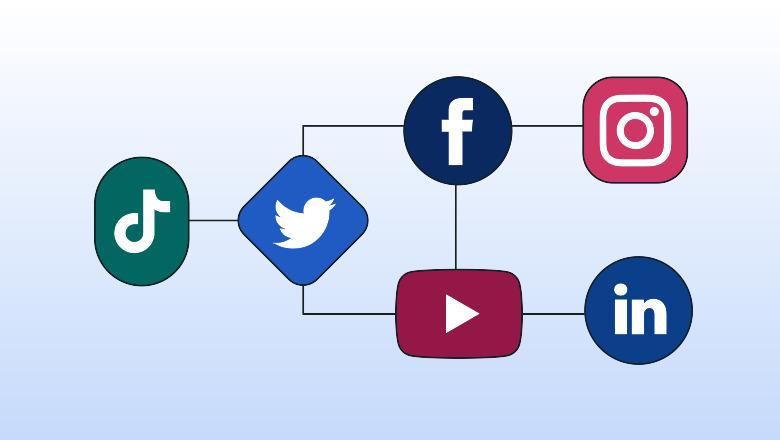
Leveraging Social Media for Affiliate Success
In today’s digital landscape, social media has become a powerhouse for affiliate marketers looking to amplify their reach and drive conversions. By strategically utilizing various social platforms, you can not only showcase products but also build a community around your brand. Let’s explore how you can harness the potential of social media for affiliate marketing success.
First and foremost, it’s essential to identify which social media platforms align with your target audience. Different platforms attract varying demographics, so knowing where your audience spends their time can significantly impact your strategy. Here are some popular options:
- Instagram: Great for visual content, perfect for lifestyle and fashion products.
- Facebook: Ideal for community building and engagement through groups and pages.
- Twitter: Excellent for real-time updates and sharing quick product links.
- Pinterest: A goldmine for DIY, crafts, and niche products with a strong visual appeal.
Once you’ve selected your platforms, focus on creating engaging, authentic content that resonates with your audience. Instead of just posting product links, consider incorporating the following strategies:
- Share personal experiences with the products you promote.
- Create how-to guides or tutorials that incorporate the products.
- Host giveaways to entice followers to engage and share your content.
Building a community is about more than just promoting products; it’s about fostering relationships. Engage with your audience by responding to comments, asking for feedback, and encouraging discussions. This level of interaction not only builds trust but also increases the likelihood that your followers will consider your recommendations.
Another crucial aspect of leveraging social media is using analytics and insights. Most platforms offer built-in tools to track your performance. Regularly reviewing these metrics can help you understand what types of content resonate most with your audience and refine your strategy accordingly. Pay attention to metrics such as:
| Metric | Purpose |
|---|---|
| Engagement Rate | Measures how well your audience interacts with your posts. |
| Click-Through Rate (CTR) | Indicates how many people clicked on your affiliate links. |
| Conversion Rate | Shows the percentage of clicks that resulted in a sale. |
Lastly, consider collaborating with influencers within your niche. Partnering with individuals who already have a loyal audience can amplify your reach and lend credibility to your recommendations. When selecting influencers, look for those whose brand values align with yours and who genuinely connect with their followers.
By integrating these strategies into your social media efforts, you can create a robust affiliate marketing plan that resonates with your audience and drives sales. Embrace the power of social media, and watch your affiliate success unfold.

Building an Engaged Audience with Email Marketing
When it comes to affiliate marketing, one of the most powerful tools in your toolkit is email marketing. It’s not just about sending out promotional emails; it’s about creating a meaningful connection with your audience. Here’s how to build that relationship effectively.
First, start by building your email list. You can do this by offering valuable content or incentives, such as:
- Exclusive discounts for subscribers
- Free resources like eBooks or guides
- Access to special webinar sessions
Remember, the goal is to attract individuals genuinely interested in your niche, as they are more likely to engage with your affiliate offers.
Next, focus on crafting compelling email content. Each email should offer value, whether it’s insights, tips, or exclusive deals. A well-rounded email strategy includes:
- Educational content: Teach your audience something new.
- Personal stories: Share your journey, making your emails more relatable.
- Promotional content: Introduce your affiliate products subtly, ensuring they align with your audience’s interests.
Segmenting your audience can significantly enhance engagement. By dividing your subscribers based on their behaviors or preferences, you can send tailored content that resonates with them. Consider segments like:
| Segment | Characteristics | Email Content Type |
|---|---|---|
| New Subscribers | Recently joined the list | Welcome series, introductory offers |
| Engaged Readers | Regularly opens emails | In-depth tutorials, product recommendations |
| Inactive Subscribers | No engagement in 3 months | Re-engagement campaigns, special offers |
Another key aspect is to optimize your email frequency. Finding the right balance is crucial. Sending too many emails can lead to unsubscribes, while too few may cause your audience to forget about you. A/B testing can be a valuable method for determining the optimal frequency. Test different schedules and analyze engagement rates to fine-tune your approach.
Last but not least, ensure you have a clear call-to-action (CTA) in every email. Whether you want your audience to check out a product, read a blog post, or follow you on social media, your CTA should be obvious and compelling. Use action-oriented language and design elements that draw attention.
By implementing these strategies, you’ll not only build an engaged audience but also enhance your effectiveness as an affiliate marketer. Remember, the key to success lies in fostering genuine relationships and providing consistent value.

The Power of SEO in Driving Traffic to Your Links
In the vast digital landscape, driving traffic to your Shopify affiliate links is crucial for success. One of the most effective ways to achieve this is through search engine optimization (SEO). By understanding and implementing SEO strategies, you can significantly enhance the visibility of your content, leading to increased traffic and conversions.
SEO is all about making your content appealing to search engines, ensuring that it ranks higher in search results. Here are some key components that can help you harness the power of SEO:
- Keyword Research: Identify relevant keywords that your target audience is searching for. Use tools like Google Keyword Planner or Ahrefs to discover high-volume keywords related to your niche.
- On-Page Optimization: Optimize your content by incorporating keywords naturally, using headings to structure your text, and ensuring you have engaging meta descriptions that entice clicks.
- Quality Content: Create valuable, informative, and engaging content that addresses the needs of your audience. The more useful your content, the more likely it is to be shared and linked to.
- Mobile Optimization: With a significant portion of users browsing on mobile devices, ensure your site is mobile-friendly. A responsive design can improve user experience and SEO rankings.
Link building is another crucial aspect of SEO. By acquiring backlinks from reputable websites, you can enhance your site’s authority and improve its ranking potential. When other sites link to your Shopify affiliate content, it not only drives traffic but also builds credibility.
Consider this simple table to illustrate the impact of quality backlinks:
| Type of Backlink | Impact on SEO |
|---|---|
| Guest Posts | High – Establishes authority and drives targeted traffic |
| Social Media Links | Medium – Increases visibility and potential shares |
| Directory Listings | Low – Useful for local searches but less impactful |
Another vital element is the use of analytics tools to track your performance. By monitoring metrics such as organic traffic, bounce rates, and conversion rates, you can adjust your strategies for better results. Tools like Google Analytics or SEMrush provide insights that can inform your SEO efforts and optimize your content.
Incorporating SEO into your Shopify affiliate marketing strategy is not just beneficial; it’s essential. By investing time and effort into optimizing your content, you’ll not only increase traffic but also enhance user experience and drive conversions. Remember, each step you take towards improving your SEO can translate into greater earnings from your affiliate links.

Tracking Your Success: Analytics and Metrics that Matter
When diving into affiliate marketing on Shopify, understanding the right metrics and analytics is crucial for gauging your success. By utilizing the right tools, you can not only track your performance but also make informed decisions that enhance your marketing strategies. Here are some key metrics to keep an eye on:
- Conversion Rate: This indicates how many visitors are completing a desired action, like making a purchase through your affiliate link. A higher conversion rate means your audience is engaging well with your content.
- Click-Through Rate (CTR): This metric shows the percentage of people who clicked on your affiliate link compared to the total number of visitors. It’s a good indicator of how compelling your call-to-action is.
- Average Order Value (AOV): Knowing the average amount spent per customer can help you tailor your promotional strategies. Aim to increase AOV through upselling or cross-selling strategies.
- Traffic Sources: Identifying where your traffic is coming from allows you to allocate resources more effectively. Is it social media, search engines, or email marketing?
To help visualize your performance, consider setting up a simple dashboard using Google Analytics or Shopify’s built-in analytics features. Here’s a basic layout of what your dashboard might include:
| Metric | Current Value | Target Value |
|---|---|---|
| Conversion Rate | 4.5% | 5% |
| CTR | 2.2% | 3% |
| AOV | $75 | $100 |
| Total Sales | $10,000 | $15,000 |
Regularly reviewing these metrics can illuminate trends and help you recognize which strategies are working and which aren’t. Don’t hesitate to pivot your approach based on these insights. For instance, if your CTR is lower than expected, consider revisiting your ad copy or images to make them more attractive.
Another vital aspect is to track your affiliate program’s performance. Knowing which products are selling well and which aren’t can guide your promotional efforts. You can analyze:
- Top-Performing Products: Focus on products with high sales to promote them more aggressively.
- Affiliate Channels: Determine which platform drives the most conversions, whether it’s social media, blogs, or email campaigns.
- Customer Feedback: Engaging with customers can provide insights into their purchasing decisions, allowing you to adjust your strategy accordingly.
remember that analytics is not just about numbers; it’s about storytelling. Each data point tells you something about your audience and their behavior. As you gather insights, think about how you can use this information to refine your content and marketing tactics. Embrace a data-driven mindset, and you’ll find yourself continually improving and achieving your affiliate marketing goals.
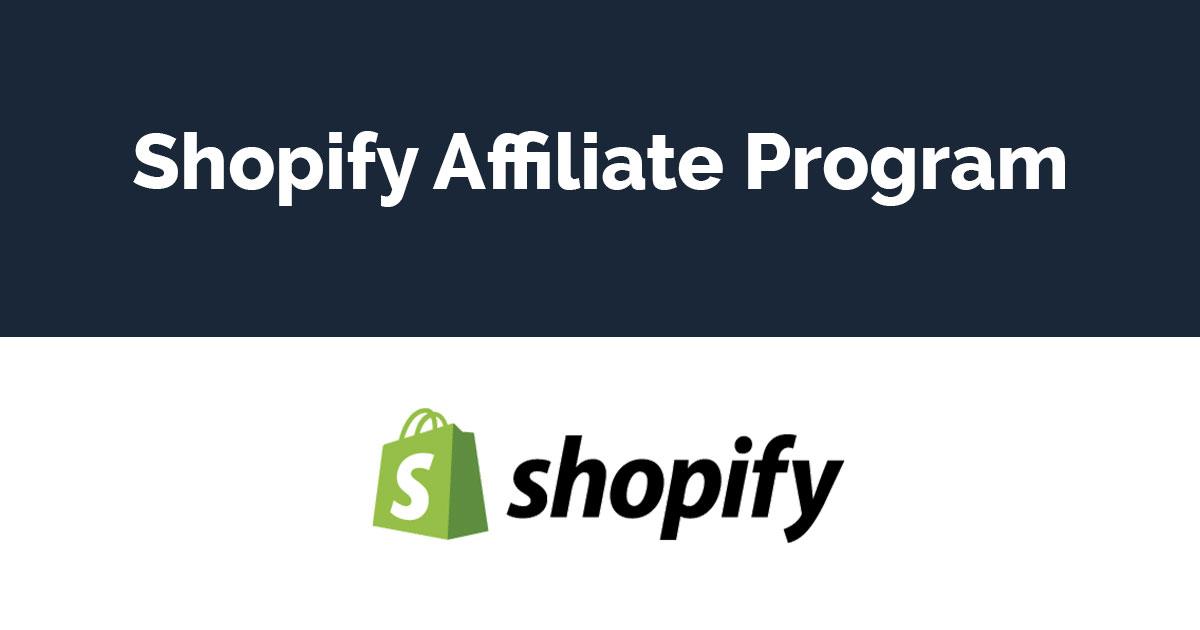
Common Pitfalls to Avoid in Shopify Affiliate Marketing
Diving into Shopify affiliate marketing can be an exciting venture, but like any journey, there are common missteps that you should be aware of. By understanding these pitfalls, you can navigate your way to success with greater ease and efficiency.
Neglecting Niche Research is one of the first traps many beginners fall into. It’s tempting to promote popular products, but without a well-defined niche, your efforts may scatter. Focus on a specific audience to tailor your marketing strategies effectively. Conduct thorough research to discover what your audience truly wants and needs.
Another mistake is overlooking SEO. Search engine optimization isn’t just for websites; it’s crucial for affiliate links and content too. If your blog posts or social media aren’t optimized, potential customers may never find your affiliate links. Utilize keywords effectively in your content, meta descriptions, and image alt texts to improve visibility.
You should also be cautious not to rely solely on one platform for your marketing efforts. While it’s easy to get comfortable with one channel, diversification is key. Consider expanding your reach through various platforms like social media, email newsletters, and your website to ensure a steady stream of traffic and potential sales.
In addition, ignoring analytics can be detrimental. Failing to track your performance means you won’t know what’s working and what’s not. Use tools like Google Analytics to monitor traffic sources, conversion rates, and user behavior. This data is invaluable for refining your strategies and optimizing your campaigns.
Underestimating the importance of relationships is another common error. Building a rapport with your audience is crucial in affiliate marketing. Engage with your followers and respond to their comments and questions. Establishing trust will lead to higher conversion rates, as people are more likely to purchase products recommended by someone they feel connected to.
| Common Pitfalls | Consequences |
|---|---|
| Neglecting Niche Research | Inconsistent traffic and low engagement |
| Overlooking SEO | Poor visibility in search engines |
| Relying on One Platform | Reduced traffic and income risks |
| Ignoring Analytics | Lack of insight and missed opportunities |
| Underestimating Relationships | Low trust and conversion rates |
Lastly, don’t fall for the trap of pushing too hard for sales. While your goal is to earn commissions, consumers can often sense when they are being sold to. Focus instead on providing value through informative content and genuine recommendations. This approach not only builds trust but also enhances your brand’s credibility.

Tips for Maximizing Your Commissions
When it comes to boosting your affiliate commissions, a strategic approach can make all the difference. Here are some effective strategies to consider:
- Know Your Audience: Understanding your target audience is essential. Research their preferences, pain points, and shopping habits. This knowledge will help you tailor your content to meet their needs.
- Choose the Right Products: Promote products that align with your audience’s interests. Look for high-quality, reputable items that have a strong demand. Consider the commission rates as well, as higher rates can significantly impact your earnings.
- Create Quality Content: Develop engaging and informative blog posts, videos, or social media content that showcases the products. Authentic reviews and tutorials can build trust and drive conversions.
- Utilize SEO Strategies: Optimize your content for search engines to increase visibility. Use relevant keywords, meta tags, and backlinks to attract organic traffic to your affiliate links.
- Leverage Email Marketing: Build an email list to reach your audience directly. Send newsletters featuring valuable content, exclusive deals, or product recommendations with your affiliate links.
Another crucial aspect is monitoring your performance. Regularly analyze your traffic and conversion rates to identify what’s working and what isn’t. Consider implementing tools like Google Analytics to gain insights into your audience’s behavior.
To further enhance your strategy, explore partnerships with other influencers or bloggers in your niche. Collaborations can expand your reach and introduce your content to new audiences. Consider guest blogging or co-hosting webinars as potential avenues for collaboration.
don’t underestimate the power of social proof. Encourage satisfied customers to leave reviews and testimonials that you can showcase. Positive feedback can significantly influence potential buyers and increase your conversion rates.

Staying Compliant with Affiliate Marketing Regulations
Engaging in affiliate marketing can be a rewarding venture, but it’s crucial to stay informed about the regulations that govern this industry. Not only does compliance help protect your brand’s reputation, but it also ensures that you maintain trust with your audience. Here are some key points to consider:
- Disclose Relationships: Always disclose your affiliate relationships transparently. Whether you’re sharing a blog post, social media update, or email newsletter, make sure your audience knows they are being directed toward an affiliate link. This builds trust and complies with the Federal Trade Commission (FTC) guidelines.
- Understand Regional Laws: Regulations can vary significantly from one region to another. Research the specific laws that apply to your target audience. For instance, if you’re marketing to European consumers, familiarize yourself with the General Data Protection Regulation (GDPR).
- Avoid Misleading Claims: When promoting products, ensure that your claims are factual and not misleading. This not only complies with legal standards but also reinforces your authority as a credible source of information.
- Respect Intellectual Property: Always respect copyright laws. Use images, videos, or content only if you have the right to do so. Violating intellectual property rights can lead to legal issues that could jeopardize your affiliate marketing efforts.
To further simplify compliance, consider maintaining a checklist that you can refer to regularly. This can include:
| Checklist Item | Status |
|---|---|
| Affiliate Relationship Disclosure | ✔️ |
| Compliance with FTC Guidelines | ✔️ |
| Verification of Product Claims | ✔️ |
| Copyright Compliance | ✔️ |
Additionally, consider leveraging resources offered by affiliate networks. Many provide guidelines and training on compliance measures that can be incredibly valuable. By aligning with reputable networks, you can access resources designed to ensure that your marketing practices are compliant and effective.
Staying updated on regulations is essential. Follow industry news and join forums or communities where affiliate marketers discuss compliance-related topics. Regularly reviewing your practices and adapting to new regulations will not only keep you compliant but also enhance your credibility in the marketplace.
In essence, being compliant doesn’t have to feel like a chore. With the right practices in place, you can seamlessly integrate compliance into your affiliate marketing strategy, allowing you to focus on what you do best—growing your business and providing value to your audience.

Future Trends in Shopify Affiliate Marketing to Watch
The landscape of affiliate marketing is constantly evolving, and Shopify is at the forefront of many exciting trends. As we look ahead, several key developments are likely to shape the future of Shopify affiliate marketing.
Greater Emphasis on Micro-Influencers: Brands are increasingly recognizing the power of micro-influencers—individuals with smaller, yet highly engaged followings. Leveraging these influencers can lead to more authentic connections with audiences. With Shopify’s platform, affiliates can easily connect with micro-influencers who align with their brand values, resulting in more effective marketing campaigns.
Integration of AI and Automation: The rise of artificial intelligence will transform how affiliates manage their campaigns. From personalized recommendations to automated content creation, AI tools can save time and improve the effectiveness of marketing strategies. Shopify provides various integrations that can help affiliates harness the power of AI, enhancing their ability to drive sales.
Enhanced Data Analytics: As data becomes increasingly valuable, affiliates will need to adopt sophisticated analytics tools to better understand their audience. Shopify’s robust analytics features allow affiliates to track performance metrics in real-time, enabling them to make data-driven decisions that can optimize their marketing efforts.
Focus on Sustainability: Consumers are becoming more conscious of sustainability, and this trend is influencing their purchasing decisions. Shopify affiliates can capitalize on this by promoting eco-friendly products and brands that prioritize sustainability. By aligning with consumer values, affiliates can build trust and loyalty among their audience.
In addition to these trends, affiliates should be aware of the following:
- Video Content Dominance: Video marketing will continue to grow, with platforms like TikTok and Instagram Reels offering unique ways to engage audiences.
- Membership and Subscription Models: More brands are adopting subscription services, allowing affiliates to generate recurring income streams.
- Community Building: Creating communities around brands can significantly enhance engagement and customer loyalty.
Cross-Platform Integration: The importance of a cohesive brand presence across multiple platforms cannot be overstated. Affiliates will need to ensure their marketing strategies are consistent whether they are promoting on social media, blogs, or email campaigns. Shopify’s capabilities allow for seamless integration across various channels, facilitating a unified approach to branding.
Mobile Optimization: As more shopping occurs on mobile devices, ensuring that affiliate marketing strategies are optimized for mobile will be crucial. Shopify’s responsive themes and mobile-friendly features make it easier for affiliates to reach their audience wherever they are.
Through these trends, Shopify affiliate marketers can not only keep pace with the changing landscape but also position themselves for long-term success in a competitive environment. By embracing innovation and understanding consumer behavior, affiliates will be well-equipped to thrive in the future.
Frequently Asked Questions (FAQ)
Q&A: Shopify Affiliate Marketing – A Guide for Beginners
Q1: What exactly is Shopify affiliate marketing?
A1: Great question! Shopify affiliate marketing is a way to earn commissions by promoting Shopify products or services. As an affiliate, you share unique links to Shopify’s offerings—like their subscription plans or apps—and when someone uses your link to make a purchase, you earn a commission. It’s a win-win; you get paid for sharing a product you love, and Shopify gains a new customer!
Q2: Why should I consider affiliate marketing with Shopify?
A2: Honestly, there are so many reasons! First off, Shopify is a trusted brand with a massive customer base, which means more potential for you to earn commissions. Plus, they offer a generous affiliate program with competitive commission rates. It’s a relatively easy way to make money online, especially if you’re already familiar with eCommerce or digital marketing.
Q3: Do I need a huge audience to start?
A3: Not at all! While having a large audience can help, it’s not a requirement. What matters most is your ability to connect with your audience and promote products effectively. Even if you have a small but engaged following, you can see success. Focus on building relationships and providing value, and your community will grow over time.
Q4: How do I get started with Shopify affiliate marketing?
A4: It’s super simple! First, you’ll need to sign up for the Shopify Affiliate Program. Once you’re approved, you’ll get access to their marketing materials and unique affiliate links. From there, start promoting those links through your blog, social media, or email newsletters. Make sure to create content that resonates with your audience—it could be tutorials, reviews, or even success stories!
Q5: What type of content should I create?
A5: The sky’s the limit! You can write blog posts reviewing Shopify features, create video tutorials on how to set up a store, or even share best practices for running an online business. Just remember to focus on value—help your audience understand how Shopify can solve their problems or improve their business. Engaging content will draw in clicks and conversions!
Q6: How much can I realistically earn with Shopify affiliate marketing?
A6: Earnings can really vary based on your efforts and audience size, but many affiliates report making anywhere from a few hundred to several thousand dollars a month. With Shopify’s commission structure, you could earn up to $2,000 for each referral, depending on the plan sold. The key is consistency—keep promoting, testing different strategies, and watch your earnings grow!
Q7: Are there any common pitfalls to avoid?
A7: Absolutely! One of the biggest mistakes is promoting products without understanding them. Always ensure you’re familiar with what you’re recommending, as authenticity builds trust. Also, don’t spam your links everywhere. Instead, focus on providing valuable content that naturally incorporates your affiliate links. The goal is to educate and engage, not just sell.
Q8: Any final tips for beginners?
A8: Yes! Be patient and persistent. Affiliate marketing is a marathon, not a sprint. Focus on building genuine relationships with your audience and providing them with valuable insights. Attend webinars, network with other affiliates, and continuously improve your skills. The more effort you put in, the more rewarding your journey will be. Dive in, stay curious, and you’ll find success before you know it!
Ready to take the plunge into Shopify affiliate marketing? Start today and watch your entrepreneurial dreams come to life!
In Conclusion
And there you have it! You’re now armed with the essentials of Shopify affiliate marketing, and it’s time to put your newfound knowledge into action. Remember, the journey might feel a bit daunting at first, but every successful affiliate started exactly where you are right now.
Take the plunge, experiment with different strategies, and don’t hesitate to learn from your experiences. The online marketplace is filled with opportunities just waiting for someone like you to seize them. Whether you’re looking to create a side hustle or build a full-fledged business, Shopify affiliate marketing can be a lucrative avenue.
So, why wait? Dive in, get creative, and start promoting products that you believe in. Trust us, the rewards can be incredible—not just financially but also in the joy of sharing products that genuinely help others.
If you have any questions or need further guidance along the way, don’t hesitate to reach out or join a community of fellow marketers. Together, we can navigate this exciting world of affiliate marketing. Happy promoting, and here’s to your future success!



